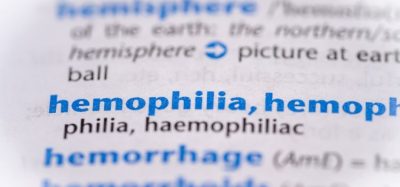Gene therapy trial facilitates major vision improvement
Posted: 6 September 2024 | Catherine Eckford (European Pharmaceutical Review) | No comments yet
Some of the rare disease participants experienced fast and sustained improvement in their eyesight during the clinical trial, data shows.


Results from a Phase I/II gene therapy trial have demonstrated that ATSN-101 enabled patients with a rare inherited disease to gain substantial, rapid improvement in their vision. Participants with Leber congenital amaurosis (LCA1) due to mutations in the GUCY2D gene were evaluated in the one-year clinical trial. Of the 15 participants, three were paediatric subjects.
Findings showed that the treatment facilitated rapid eyesight improvement, “often within the first month, after the therapy was applied and lasted for at least 12 months”, according to the researchers.
The highest dose of the gene therapy enabled two out of nine patients given the highest dose to have a 10,000-fold improvement in vision.
“That 10,000-fold improvement is the same as a patient being able to see their surroundings on a moonlit night outdoors as opposed to requiring bright indoor lighting before treatment,” explained the study’s lead author, Dr Artur Cideciyan, PhD, a research professor of Ophthalmology and co-director of the Center for Hereditary Retinal Degenerations.
Adapted from the AAV5 microorganism, administration of ATSN-101 was done via surgical injection into under the retina of the eye.
More about the Phase I/II gene therapy study
The highest dose of the gene therapy enabled two out of nine patients given the highest dose to have a 10,000-fold improvement in vision”
In the first phase study, adult participants received one out of three dosage levels of the therapy. The second phase of the study consisted of individuals receiving the high dose. Three adults and three children were administered with ATSN-101 in this latter part of the trial.
Positively, half (3 of 6) of the high-dosage patients achieved the highest-possible score in a mobility and navigation test conducted in varying levels of light.
“Even though we previously predicted a large vision improvement potential in LCA1, we did not know how receptive patients’ photoreceptors would be to treatment after decades of blindness,” explained Cideciyan.
“The treatment success in our most recent clinical trials together with our earlier experience brings hope for a viable treatment for about 20 percent of infantile blindness caused by inherited retinal degenerations,” added Dr Tomas Aleman, paper co-author and Irene Heinz-Given and John LaPorte Research Professor in Ophthalmology and co-director with Cideciyan of the Center for Hereditary Retinal Degenerations.
While participating patients with Leber congenital amaurosis from the ATSN-101 gene therapy trial are still being observed, another randomised trial is required to move forward with potential regulatory approval of the treatment, the researchers highlighted.
These study findings were published in The Lancet.
Related topics
Clinical Development, Clinical Trials, Data Analysis, Drug Safety, Gene therapy, Industry Insight, Technology, Therapeutics









